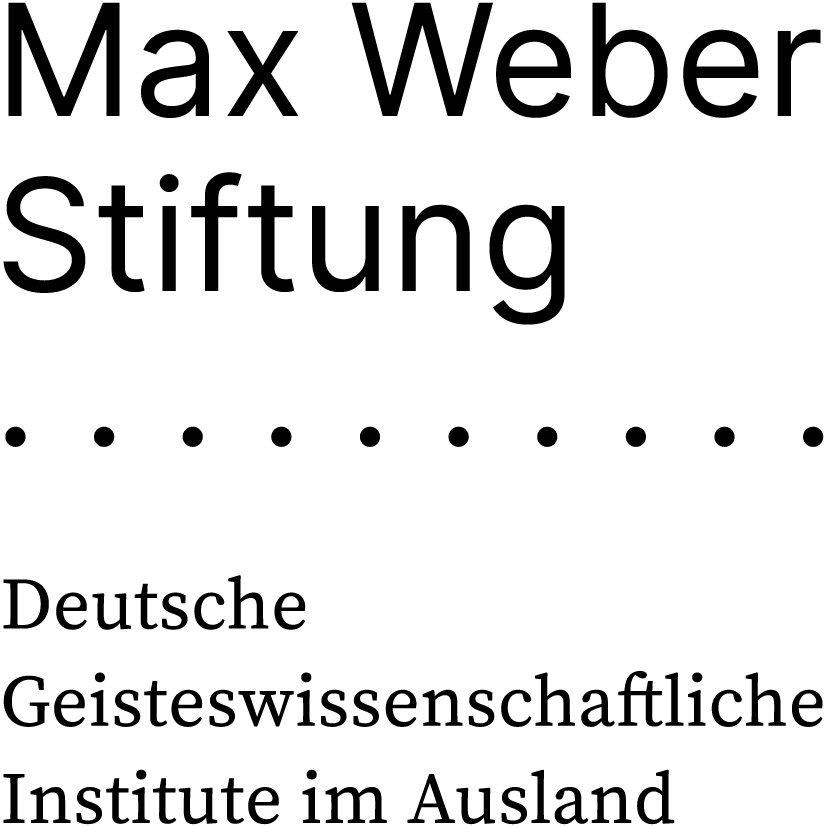In 1548, Tuscan Gran Duke Cosimo I wrote to Bernardo de' Medici, his ambassador to Holy Roman Emperor Charles V, that his »Greek palm-reader« was hoping to rejoin the Imperial court where »he had enjoyed the conversation[s] [with] and freedom of many of those Lords«.1 Less than a decade later, in 1557, the Greek migrant Nicolaus Kali Coroneus from the Ottoman port town of Koroni (Peloponnese) visited the scholar Martin Crusius in Tübingen while travelling across the Holy Roman Empire to collect monies for the ransoming of Christian slaves. Between 1541 and the 1770s, more than a hundred Ottoman-Greek/Ottoman-Christian petitioners were recorded in the Holy Roman Empire. In his monograph Greeks in the Holy Roman Empire: Migration and Its Significance for the History of Knowledge (transl. LG), Stefano Saracino presents the first comparative study of three groups of Ottoman-Greek (and occasionally Venetian or Habsburg Orthodox-Christian) migrants in selected regions of the Holy Roman Empire: petitioners, students, and merchants. While Greek petitioners in the Holy Roman Empire constitute a small though constant presence throughout the early modern period, the migration of Greek students and merchants to Imperial centres of learning and commerce (here, Halle and Vienna) represents a more circumscribed and localised phenomenon which can be traced to the 1700s–1750s and the late eighteenth to nineteenth centuries respectively.
The first section of the book investigates the presence of Greek petitioners in the Holy Roman Empire. Wanting to raise monies for the haraç (the tax imposed by Ottoman authorities on non-Muslim subjects), to repay locally acquired debts, fund the (re-)building of Christian institutions, and ransom Christian slaves, these Greek petitioners (of which several were Athonite monks) belonged to the milieu of remarkable though also ambiguous and unsettling itinerant strangers who repeatedly crossed the geographical, political, and confessional boundaries of early modern Europe. Often linked with the stereotype of the »Graecus mendax« (the lying/deceiving Greek), these petitioners were constantly required to prove their identities, confessional belongings, and the legitimacy of their undertakings. Wanting to appeal to Christian solidarity and having to compete with various other groups of petitioners, these itinerant foreigners could often dissimulate their identities, hide their intents, or appeale to pre-conceived notions of Christian hardship under Muslim rule. These itinerant petitioners were also crucial to European »armchair« orientalists wanting to acquire knowledge about the nature of the Greek Faith, the Ottoman Empire, and oriental languages.
The second section is dedicated to Ottoman-Christian and Habsburg-Orthodox students at the Pietistic educational foundations of Halle (Margraviate of Brandenburg/Kingdom of Prussia). In the eighteenth century, the Halle foundations experienced two distinct migration waves of Orthodox students, a first one of eight students in 1703–1707, a second of 18 students in 1745–1751. In between, the foundations also welcomed the renowned Eastern-Christian Arabic teachers Salomon Negri (1701, 1715, 1717) and Carolus Rali Dadichi (1718–1719) as well as two more Orthodox students in 1738. While the students of the first wave were recruited directly by missionaries in Constantinople, Venice, or amongst the members of the recently dissolved Greek College of Oxford (dissolved in 1705), those who visited Halle in the mid-eighteenth century came from Habsburg Hungary and the Ottoman-Habsburg borderlands. While the former were predominantly Greek-speaking, the latter spoke Slavonic or Eastern Romance languages. Finally, students of the first group came to Halle as members of the Collegium Orientale and the Seminarium Graecum, while the latter were recruited to contribute to the Institutum Judaicum et Mohammedicum (founded in 1728) and the Typographia Orientalis. Similarly to the Greek College of Saint Athanasius in Rome (founded in 1577) and the Catholic Propaganda Fide (founded in 1622), Orthodox students in Halle received training to become missionaries in the Ottoman lands, taught Modern Greek to their fellow German students, and contributed to polyglot printing activities.
The third section traces the presence of Greek-Orthodox merchants from the (newly conquered) Habsburg-Hungarian territories and the Ottoman Empire in eighteenth-century Vienna. From 1718, the Ottoman-Habsburg Peace of Passarowitz (Požarevac) facilitated the migration of Ottoman-Greek merchants to the Imperial capital, further encouraged by the promulgation of religious rights and privileges. In the 1720s, the Ottoman-Greeks of Vienna founded the Orthodox chapel and brotherhood of Saint George. In 1787, Orthodox merchants who were also Habsburg subjects established their own parish, the parish of the Holy Trinity. From the late eighteenth century, members of these communities donated monies to found and support Greek charitable and educational institutions across the Habsburg and Ottoman dominions. Some of Vienna’s Greek-Orthodox merchants even occasionally married local Catholic women. For example, in 1794, Franziska Seitleben, the daughter of a physician, embraced Greek Christianity to marry the Greek merchant and Habsburg subject Demeter Oeconomus (396‑399). In Vienna, members of the academy of oriental studies (Orientalische Akademie, founded in 1754) also profited from the flourishing of Greek cultural and intellectual life, including the Modern Greek printing productions established in the 1790s.
The final section summarises European perceptions and engagement with contemporary Greek learning. Despite language barriers, confessional biases, epistemic uncertainties, and the (alleged) ignorance of Ottoman Greeks, scholars across the Holy Roman Empire relied on and appreciated these migrants as valuable and trustworthy sources for unlocking Eastern languages, religions, and cultures. In line with the findings of other scholars interested in the influence of Ottoman migrants on European learning and oriental studies, this section may have further benefitted from a discussion of the recent works by A. Bevilacqua, R. Calis, and N. Palabıyık.
By focusing on three distinct groups of Ottoman-Greek migrants to the Holy Roman Empire, Saracino moves away from more traditional approaches to minorities in early modern Europe. While these have investigated strategies of community- and identity‑making, institutional organisation, and negotiation with local authorities, Saracino discusses aspects of knowledge transmission and migration from multiple geographical, confessional, and chronological perspectives, allowing him to account for the Holy Roman Empire’s deep-running plurality. Still, this focus on three comparably well-studied groups of early modern migrants (petitioners, students, and merchants) can also bear the risk of overlooking some less‑prominent individuals who equally experienced (in-)voluntary displacement between East and West – from Ottoman migrant women to servants, captives, and mariners. In fact, some of Saracino’s most intriguing findings relating to the migration of Ottoman women can serve as the starting point for future investigations. For example, in 1593, the petitioner from Philippoupolis (Plovdiv) Andreas Lascareus reached Tübingen accompanied by his wife and children (90, 93). In 1705‑1706, »former slave Anna« (transl. LG) and the wife of the Turkish physician Abdullah escorted Pietistic missionaries from Istanbul to Halle (205–206). In late eighteenth-century Vienna, wealthy Greek women acted as charitable donors (372, Appendix 2). While these may represent isolated cases, future studies may enquire into the overlooked role of these migrant women in shaping European intellectual and cultural life.
Drawing from 17 archives across Austria, Germany, and the Holy See as well as the manuscript collections of over six libraries, Saracino provides the reader with several helpful appendices and tables which will serve as excellent starting points for any future investigation into Ottoman-European migration. Appendix 1 sheds light on the identities and motivations of Ottoman-Christian petitioners in the Holy Roman Empire. Appendix 2 provides an overview of the 38 members of the Greek-Orthodox parishes of Vienna who, from the 1780s to 1815, founded charitable institutions. Additional tables (211–212 and 251–253) provide an overview of the Greek-Orthodox students who arrived in Halle in the 1700s and 1740s–1750s. Representing the most recent major German contribution in a field usually dominated by Francophone and Anglophone scholarship, Saracino’s remarkable Greeks in the Holy Roman Empire is a highly learned and meticulous investigation into European perceptions, interactions, and reckoning with Ottoman-Christian migration.
Zitationsempfehlung/Pour citer cet article:
Lavinia Gambini, Rezension von/compte rendu de: Stefano Saracino, Griechen im Heiligen Römischen Reich. Migration und ihre wissensgeschichtliche Bedeutung, Berlin, Boston (De Gruyter Oldenbourg) 2024, XI–544 S., Abb. (Cultures and Practices of Knowledge in History, 19), ISBN 978-3-11-119479-0, DOI 10.1515/9783111194387, EUR 99,95., in: Francia-Recensio 2025/1, Frühe Neuzeit – Revolution – Empire (1500–1815), DOI: https://doi.org/10.11588/frrec.2025.1.109509








